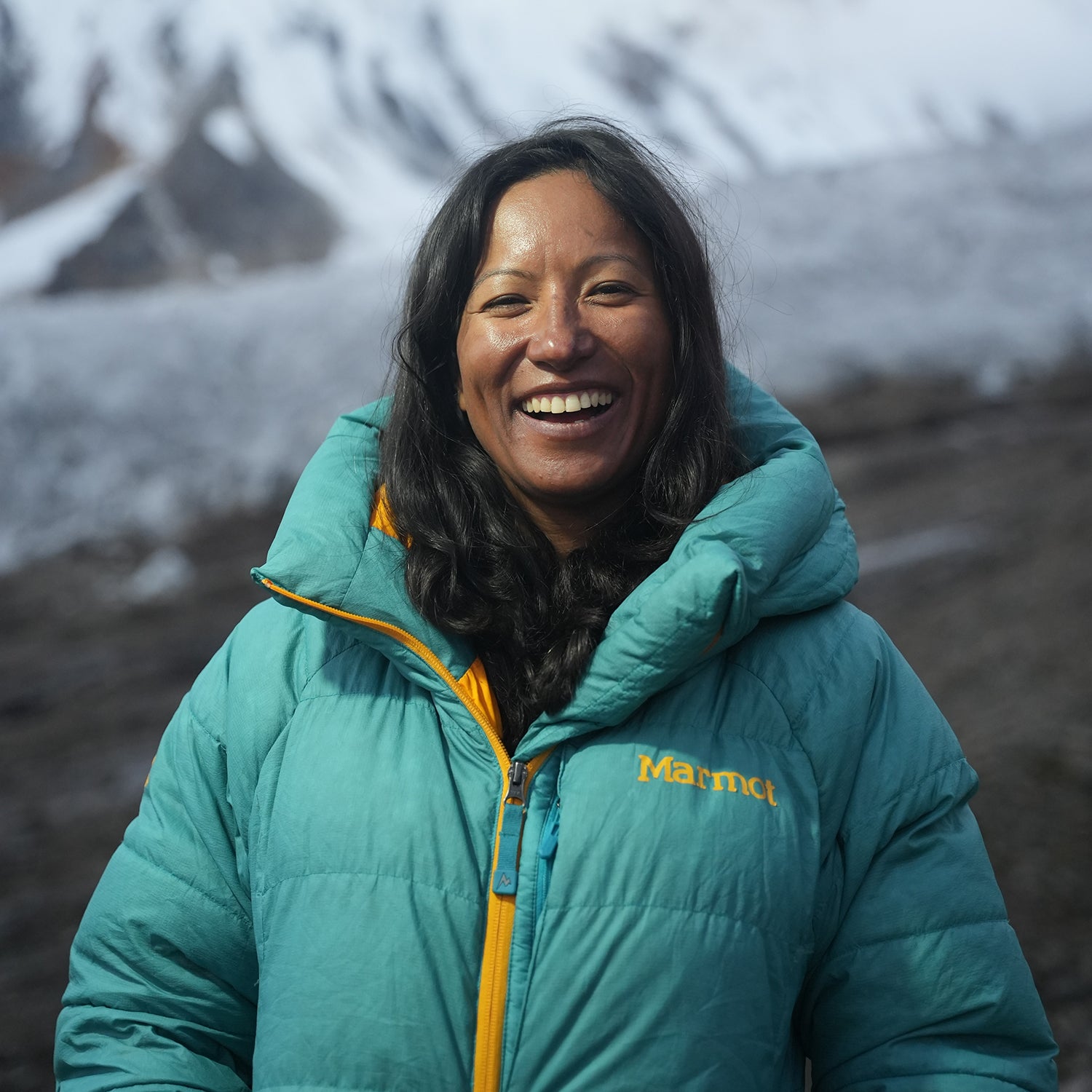Born into a family of subsistence farmers in the tiny village of Arughat, Nepal, Purnima Shrestha thought that the mountains around her were out of reach. Her village is a stop on the Manaslu Circuit, en route to the eponymous 8,000-meter peak, but Shrestha’s family didn’t even have running water. As a woman, she was expected to marry young, raise children, and keep the house.
Shrestha decided early that this path wasn’t for her. First she broke from tradition by moving to Kathmandu at 16 to pursue her education. She stayed with relatives until she graduated from secondary school, then enrolled in college to study communications. Later she landed an internship with Hospitality, Food and Wine, kick-starting a career in publishing.
While covering the 2017 Everest Marathon, Shrestha became enthralled with the world’s highest summit. To her it represented a pinnacle of human achievement. “In Nepal and around the world, everyone thinks of Everest when they think of mountains,” she said. The 29,032-foot summit was an outsize goal for the daughter of poor farmers, but Shrestha took it a step at a time. “In the beginning I had nothing,” she said. “I had no experience. No money. I wasn’t even athletic. I had no idea how strong my body was, but I wanted to try.”
So Shrestha took out some loans, started training, and committed herself to climbing. In the seven years since, she has summited eight of the world’s 8,000-meter peaks. This year the 34-year-old became the first woman in history to summit Everest three times in a single season, between May 12 and May 25.
Shrestha didn’t set out to break records. Everest was just the highest, hardest goal she could imagine. “I wanted to see what I was capable of,” she said. After she summited once, she said, “All of my dreams centered on climbing it again. I prayed for a reason to go back.”
With her newfound visibility, Shrestha feels an obligation to be a beacon for change. Through her work, she has witnessed the problems facing her country’s mountaineering industry. Chief among them are the backbreaking labor Sherpa guides, porters, and other mountain workers undertake, along with the physical risks and scant benefits. “You can only do this job as long as your body allows,” Shrestha said. “It’s difficult, and there’s no security or insurance. This generation of mountain workers don’t want the next generations to get into the industry. It’s not sustainable.” Shrestha says that she hopes the Nepalese government will consider providing insurance and other benefits, such as a retirement fund, for mountain workers.
Success isn’t guaranteed when it comes to the world’s highest peaks, where avalanches, storms, and altitude can stymie the most capacious lungs and ironclad wills, but “the important thing is to try,” said Shrestha, particularly as a female climber. “People always make women feel weak, and we internalize this. We convince ourselves we can’t do things, that we’ll fail. I want to tell other women that there’s nothing that limits us.”


